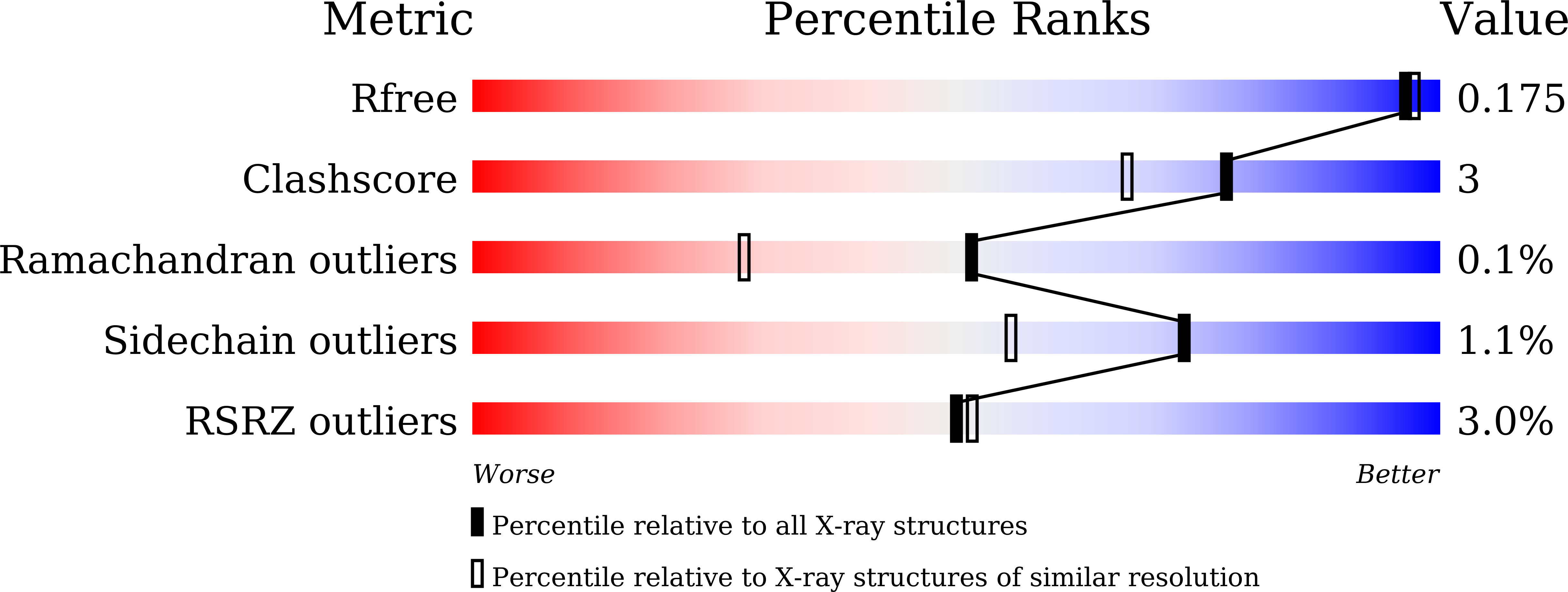Substituent Position of Iminocyclitols Determines the Potency and Selectivity for Gut Microbial Xenobiotic-Reactivating Enzymes.
Dashnyam, P., Lin, H.Y., Chen, C.Y., Gao, S., Yeh, L.F., Hsieh, W.C., Tu, Z., Lin, C.H.(2020) J Med Chem 63: 4617-4627
- PubMed: 32105467
- DOI: https://doi.org/10.1021/acs.jmedchem.9b01918
- Primary Citation of Related Structures:
6JZ1, 6JZ2, 6JZ3, 6JZ4, 6JZ5, 6JZ6, 6JZ7, 6JZ8 - PubMed Abstract:
Selective inhibitors of gut bacterial ¦Â-glucuronidases (GUSs) are of particular interest in the prevention of xenobiotic-induced toxicities. This study reports the first structure-activity relationships on potency and selectivity of several iminocyclitols ( 2 - 7 ) for the GUSs. Complex structures of Ruminococcus gnavus GUS with 2 - 7 explained how charge, conformation, and substituent of iminocyclitols affect their potency and selectivity. N1 of uronic isofagomine ( 2 ) made strong electrostatic interactions with two catalytic glutamates of GUSs, resulting in the most potent inhibition ( K i ¡Ư 11 nM). C6-propyl analogue of 2 ( 6 ) displayed 700-fold selectivity for opportunistic bacterial GUSs ( K i = 74 nM for E. coli GUS and 51.8 ¦̀M for Rg GUS). In comparison with 2 , there was 200-fold enhancement in the selectivity, which was attributed to differential interactions between the propyl group and loop 5 residues of the GUSs. The results provide useful insights to develop potent and selective inhibitors for undesired GUSs.
Organizational Affiliation:
Institute of Biological Chemistry, Academia Sinica, No 128, Academia Road, Taipei 11529, Taiwan.















